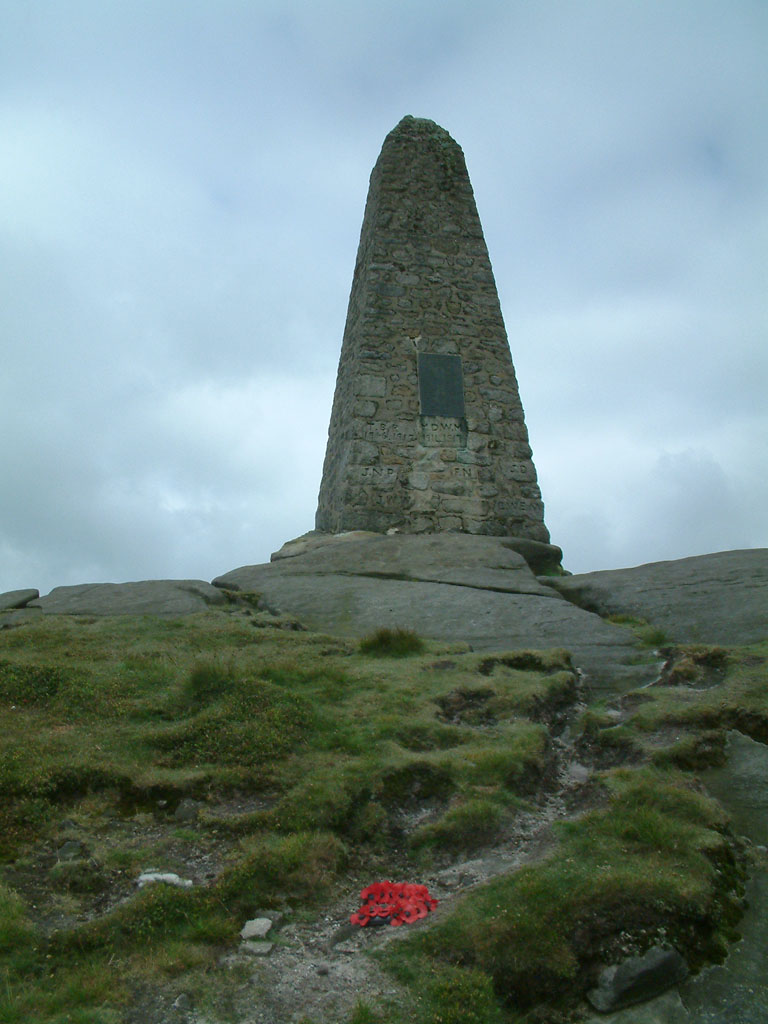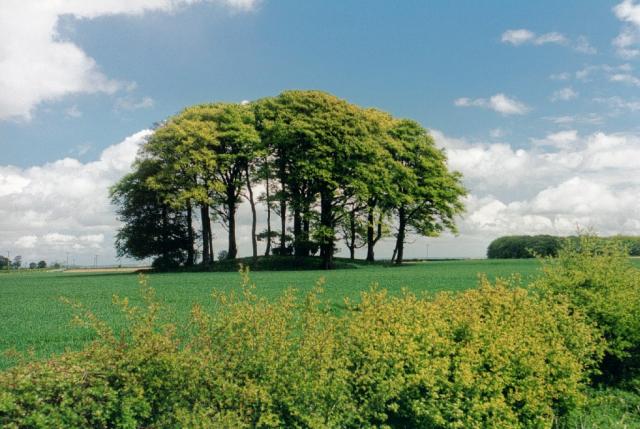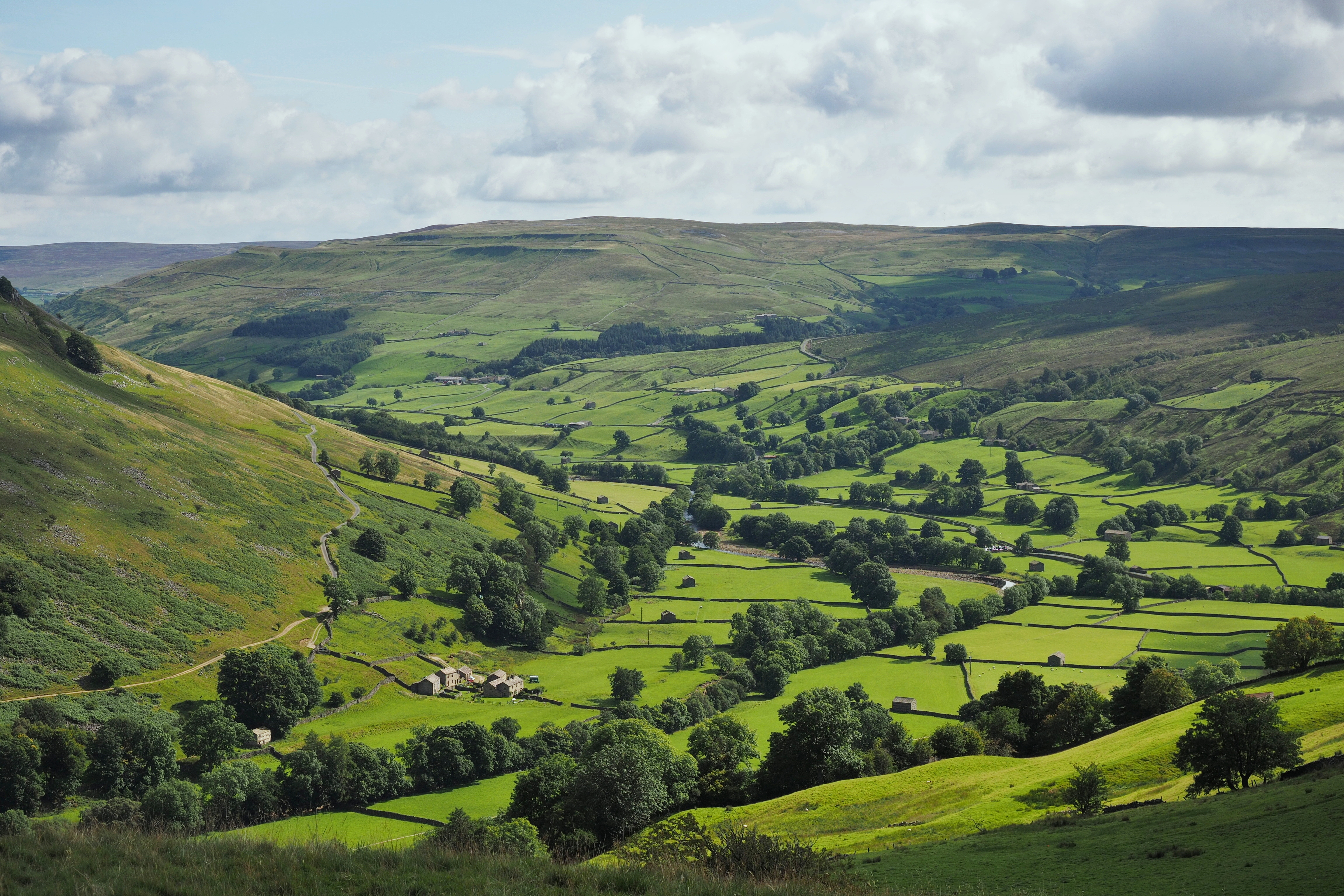|
Thorpe Fell Top
Thorpe Fell Top is the top of the hill of Burnsall and Thorpe Fell in the Yorkshire Dales, itself forming part of a larger wedge of ground between Wharfedale and Skipton. The summit of this grouse moorland, moor is 506 metres above sea level and topped with a trig point. It was listed in Alan Dawson's "The Relative Hills of Britain" as a Marilyn (hill), Marilyn. However, a number of recent observations and measurements suggest that the base of the war memorial at the top of Cracoe Fell () some to the south-west, is probably higher, perhaps as high as 510 metres. Thorpe Fell Top is probably most easily visited from either Thorpe, North Yorkshire, Thorpe or Burnsall. The track and path marked on Ordnance Survey maps to the north and west of the summit continues all the way to the top of Cracoe Fell. The latter can also be reached along Fell Lane from the village of Cracoe. References {{Marilyns N Eng Marilyns of England Peaks of the Yorkshire Dales Wharfedale ... [...More Info...] [...Related Items...] OR: [Wikipedia] [Google] [Baidu] |
Whernside
Whernside is a mountain in the Yorkshire Dales in Northern England. It is the highest of the Yorkshire Three Peaks, the other two being Ingleborough and Pen-y-ghent. It is the highest point in the ceremonial county of North Yorkshire Mickle Fell in southern Teesdale is the highest point within the boundaries of the historic county of Yorkshire. and the historic West Riding of Yorkshire with the summit lying on the county boundary with Cumbria. It is the fifteenth most prominent hill in England. In shape Whernside forms a long ridge, running roughly north-north-east to south-south-west. The mountain is north west of Ingleton and north of Horton-in-Ribblesdale. Name The name, first recorded in 1208 as ''Querneside'', is of Old English origin. It is derived from ''cweorn'' ' quern' or 'millstone' and ''sīde'' 'hillside', so means "hillside where millstones are found". The name is of the same origin as Great Whernside, to the east, with which it is sometimes confus ... [...More Info...] [...Related Items...] OR: [Wikipedia] [Google] [Baidu] |
Marilyn (hill)
This is a list of Marilyn hills and mountains in the United Kingdom, Republic of Ireland, Ireland and surrounding islands and Stack (geology), sea stacks. Lists of mountains and hills in the British Isles#Marilyns, Marilyns are defined as peaks with a topographic prominence, prominence of or more, regardless of height or any other merit (e.g. topographic isolation, as used in Lists of mountains and hills in the British Isles#Munros, Munros). Thus, Marilyns can be mountains, with a height above , or relatively small hills. there were 2,010 recorded Marilyns. Definition The Marilyn classification was created by Alan Dawson in his 1992 book ''The Relative Hills of Britain''. The name Marilyn was coined by Dawson as a punning contrast to the ''Munro'' classification of Scottish mountains above , but which has no explicit prominence threshold, being homophone, homophonous with (Marilyn) ''Marilyn Monroe, Monroe''. The list of Marilyns was extended to Ireland by Clem Clements. Ma ... [...More Info...] [...Related Items...] OR: [Wikipedia] [Google] [Baidu] |
Yorkshire Dales
The Yorkshire Dales are a series of valleys, or Dale (landform), dales, in the Pennines, an Highland, upland range in England. They are mostly located in the Ceremonial counties of England, ceremonial county of North Yorkshire, but extend into Cumbria and Lancashire; they are entirely within the Historic counties of England, historic boundaries of Yorkshire. The majority of the dales are within the Yorkshire Dales National Park, created in 1954. The exception is the area around Nidderdale, which forms the separate Nidderdale AONB, Nidderdale Area of Outstanding Natural Beauty. The landscape of the Yorkshire Dales consists of sheltered glacial valleys separated by exposed moorland. The predominant rock is Carboniferous Limestone, which is particularly visible in the south-west in features such as Malham Cove. It is overlain in many areas by the Yoredale Series of alternating weak shales and hard limestones and sandstones, which give the dales their characteristic 'stepped' appeara ... [...More Info...] [...Related Items...] OR: [Wikipedia] [Google] [Baidu] |
England
England is a Countries of the United Kingdom, country that is part of the United Kingdom. It is located on the island of Great Britain, of which it covers about 62%, and List of islands of England, more than 100 smaller adjacent islands. It shares Anglo-Scottish border, a land border with Scotland to the north and England–Wales border, another land border with Wales to the west, and is otherwise surrounded by the North Sea to the east, the English Channel to the south, the Celtic Sea to the south-west, and the Irish Sea to the west. Continental Europe lies to the south-east, and Ireland to the west. At the 2021 United Kingdom census, 2021 census, the population was 56,490,048. London is both List of urban areas in the United Kingdom, the largest city and the Capital city, capital. The area now called England was first inhabited by modern humans during the Upper Paleolithic. It takes its name from the Angles (tribe), Angles, a Germanic peoples, Germanic tribe who settled du ... [...More Info...] [...Related Items...] OR: [Wikipedia] [Google] [Baidu] |
Ordnance Survey
The Ordnance Survey (OS) is the national mapping agency for Great Britain. The agency's name indicates its original military purpose (see Artillery, ordnance and surveying), which was to map Scotland in the wake of the Jacobite rising of 1745. There was also a more general and nationwide need in light of the potential threat of invasion during the Napoleonic Wars. Since 1 April 2015, the Ordnance Survey has operated as Ordnance Survey Ltd, a state-owned enterprise, government-owned company, 100% in public ownership. The Ordnance Survey Board remains accountable to the Secretary of State for Science, Innovation and Technology. It was also a member of the Public Data Group. Paper maps represent only 5% of the company's annual revenue. It produces digital map data, online route planning and sharing services and mobile apps, plus many other location-based products for business, government and consumers. Ordnance Survey mapping is usually classified as either "Scale (map), lar ... [...More Info...] [...Related Items...] OR: [Wikipedia] [Google] [Baidu] |
Wharfedale
Wharfedale ( ) is one of the Yorkshire Dales. It is situated at source in North Yorkshire and then flows into West Yorkshire and forms the upper valley of the River Wharfe. Towns and villages in Wharfedale (downstream, from west to east) include Buckden, North Yorkshire, Buckden, Kettlewell, Conistone, Grassington, Hebden, North Yorkshire, Hebden, Bolton Abbey, North Yorkshire, Bolton Abbey, Addingham, Ilkley, Burley-in-Wharfedale, Otley, Pool-in-Wharfedale, Arthington, Collingham, West Yorkshire, Collingham and Wetherby. Beyond Wetherby, the valley opens out and becomes part of the Vale of York. The section from the river's source to around Addingham is known as ''Upper Wharfedale''. It lies in North Yorkshire and the Yorkshire Dales National Park. The first or so is known as Langstrothdale, including the settlements of Beckermonds, Yockenthwaite and Hubberholme, famous for its church, the resting place of the writer J. B. Priestley. As it turns southwards, the Wharfe then run ... [...More Info...] [...Related Items...] OR: [Wikipedia] [Google] [Baidu] |
Skipton
Skipton (also known as Skipton-in-Craven) is a market town and civil parish in North Yorkshire, England. Historically in the East Division of Staincliffe Wapentake in the West Riding of Yorkshire, it is on the River Aire and the Leeds and Liverpool Canal to the south of the Yorkshire Dales. It is situated north-west of Leeds and west of York. At the 2021 Census, the population was 15,042. The town has been listed as one of the best and happiest places to live in the UK. History Evidence for prehistoric habitation in the Skipton area includes an "important outlying group" of cup and ring marked rocks on Skipton Moor, to the south-east of the town, and in the same area there is an enclosed Iron Age hilltop settlement. The name Skipton means 'sheep-town', a northern dialect form of ''Shipton''. Its name derives from the Old English ''sceap'' (sheep) and ''tun'' (town or village). The name is recorded in the Domesday Book of 1086. The town was important during the E ... [...More Info...] [...Related Items...] OR: [Wikipedia] [Google] [Baidu] |
Grouse
Grouse are a group of birds from the order (biology), order Galliformes, in the family (biology), family Phasianidae. Grouse are presently assigned to the Tribe (biology), tribe Tetraonini (formerly the subfamily Tetraoninae and the family Tetraonidae), a classification supported by mitochondrial DNA sequence studies, and applied by the American Ornithologists' Union, ITIS, International Ornithologists' Union, International Ornithological Congress, and others. Grouse inhabit temperate and subarctic regions of the Northern Hemisphere, from pine trees, pine forests to moorland and mountainside, from 83rd parallel north, 83°N (rock ptarmigan in northern Greenland) to 28th parallel north, 28°N (Attwater's prairie chicken in Texas). The Turkey (bird), turkeys are closely allied with grouse, but they have traditionally been excluded from Tetraonini, often placed in their own tribe, subfamily, or family; certain more modern treatments also exclude them. Later phylogenomic analyses ... [...More Info...] [...Related Items...] OR: [Wikipedia] [Google] [Baidu] |
Moorland
Moorland or moor is a type of Habitat (ecology), habitat found in upland (geology), upland areas in temperate grasslands, savannas, and shrublands and the biomes of montane grasslands and shrublands, characterised by low-growing vegetation on Soil pH, acidic soils. Moorland today generally means uncultivated hill land (such as Dartmoor in South West England), but also includes low-lying wetlands (such as Sedgemoor, also South West England). It is closely related to heath, although experts disagree on the exact distinction between these types of vegetation. Generally, moor refers to Highland (geography), highland and high rainfall areas, while heath refers to lowland zones which are more likely to be the result of human activity. Moorland habitats are found mainly in Tropics, tropical Africa, Northern Europe, northern and western Europe, and South America. Most of the world's moorlands are diverse ecosystems. In the extensive moorlands of the tropics, biodiversity can be extremely ... [...More Info...] [...Related Items...] OR: [Wikipedia] [Google] [Baidu] |
Trig Point
A triangulation station, also known as a trigonometrical point, and sometimes informally as a trig, is a fixed surveying station, used in geodetic surveying and other surveying projects in its vicinity. The station is usually set up by a mapping organisation with known coordinates and elevation published. Numerous stations are installed on summits for purposes of visibility and prominence. A graven metal plate on the top of a pillar may provide a mounting point for a theodolite or reflector, often using some form of kinematic coupling to ensure reproducible positioning. Use Trigonometrical stations form networks of triangulation. Positions of land boundaries, roads, railways, bridges and other infrastructure can be accurately located by the network, a task essential to the construction of modern infrastructure. Apart from the known stations set up by government, some temporary trigonometrical stations are set up near construction sites for monitoring the precision and progr ... [...More Info...] [...Related Items...] OR: [Wikipedia] [Google] [Baidu] |
Thorpe, North Yorkshire
Thorpe is a hamlet and civil parish in Wharfedale, North Yorkshire, England. It is south of Grassington and north of Skipton. At the 2011 census the population remained less than 100, so the details were included in the civil parish of Burnsall. However in 2015, North Yorkshire County Council estimated the population to be 50. History Thorpe is mentioned in the Domesday Book as belonging to Osborn of Arques. The name derives from the Old Norse of ''þorp'', which means "outlying farmstead". It was sometimes referred to as ''Thorpe Subtus Montem'', and ''Thorpe-sub-Montem''. The hamlet is secluded and surrounded by reef knolls, especially Elbolton Hill to the west, and Kail Hill to the east. All of these form part of the Cracoe Reef Knolls SSSI. This seclusion apparently meant that Thorpe remained unaffected by Scottish raiders, and was the place that local people went to in order to escape troops engaged in the English Civil War. These areas also have an extensive field sy ... [...More Info...] [...Related Items...] OR: [Wikipedia] [Google] [Baidu] |








